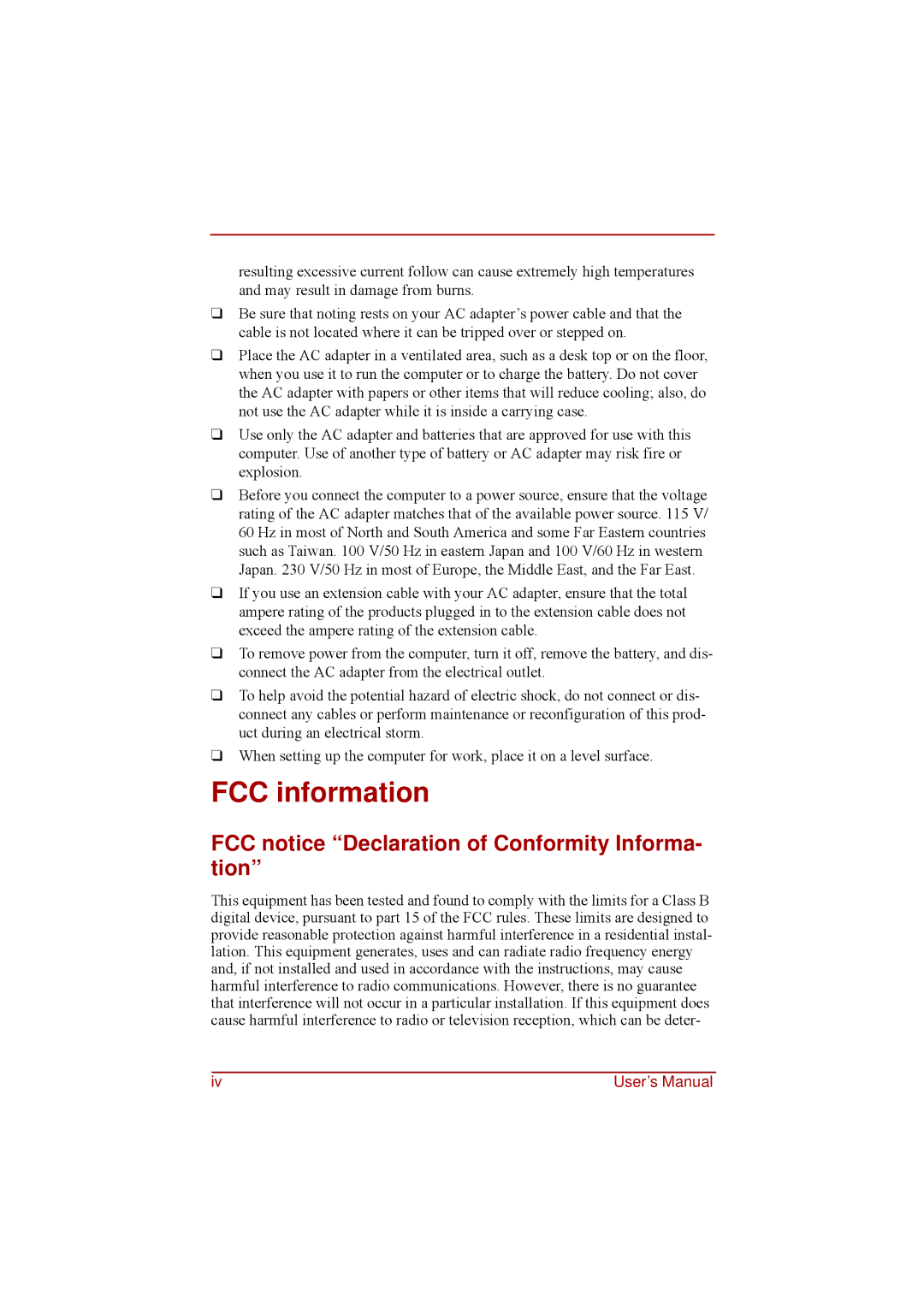resulting excessive current follow can cause extremely high temperatures and may result in damage from burns.
❑Be sure that noting rests on your AC adapter’s power cable and that the cable is not located where it can be tripped over or stepped on.
❑Place the AC adapter in a ventilated area, such as a desk top or on the floor, when you use it to run the computer or to charge the battery. Do not cover the AC adapter with papers or other items that will reduce cooling; also, do not use the AC adapter while it is inside a carrying case.
❑Use only the AC adapter and batteries that are approved for use with this computer. Use of another type of battery or AC adapter may risk fire or explosion.
❑Before you connect the computer to a power source, ensure that the voltage rating of the AC adapter matches that of the available power source. 115 V/ 60 Hz in most of North and South America and some Far Eastern countries such as Taiwan. 100 V/50 Hz in eastern Japan and 100 V/60 Hz in western Japan. 230 V/50 Hz in most of Europe, the Middle East, and the Far East.
❑If you use an extension cable with your AC adapter, ensure that the total ampere rating of the products plugged in to the extension cable does not exceed the ampere rating of the extension cable.
❑To remove power from the computer, turn it off, remove the battery, and dis- connect the AC adapter from the electrical outlet.
❑To help avoid the potential hazard of electric shock, do not connect or dis- connect any cables or perform maintenance or reconfiguration of this prod- uct during an electrical storm.
❑When setting up the computer for work, place it on a level surface.
FCC information
FCC notice “Declaration of Conformity Informa- tion”
This equipment has been tested and found to comply with the limits for a Class B digital device, pursuant to part 15 of the FCC rules. These limits are designed to provide reasonable protection against harmful interference in a residential instal- lation. This equipment generates, uses and can radiate radio frequency energy and, if not installed and used in accordance with the instructions, may cause harmful interference to radio communications. However, there is no guarantee that interference will not occur in a particular installation. If this equipment does cause harmful interference to radio or television reception, which can be deter-
iv | User’s Manual |
